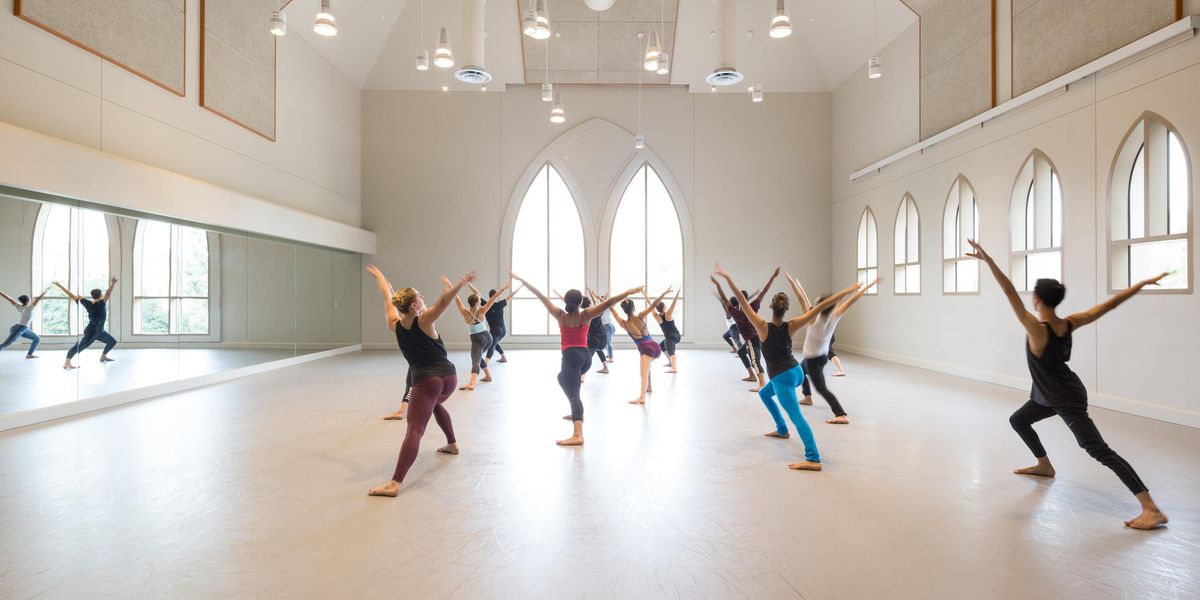Your Career: Hitting the Books
Whitney Jensen tackles college on the side.
Jensen and Jeffrey Cirio in Alexander Ekman’s Cacti. Photo by Rosalie O’Connor, courtesy Boston Ballet
Whitney Jensen’s career is a study in ballet stardom. With a slew of competition medals, she joined Boston Ballet’s corps in 2009 and hasn’t stopped rising since. The 22-year-old’s long lines, calm, yet intense presence and surprising humility earned her a much-awaited promotion to principal this summer.
But there’s more to Jensen than what fans see onstage. While catapulting to the top of the company, she has also been studying part-time at Northeastern University. Though she went to school to explore future career options, she has already seen a return on the degree. School, Jensen says, has opened her up to new experiences that help her develop on- and offstage.
Like many ballet dancers, Jensen didn’t prioritize college when she first joined Boston Ballet. Ensuring her future there took all of her time and focus. But she began to rethink her path when the company entered a partnership with Northeastern in 2013. She saw how inspired her peers were by the courses they were taking and enrolled the next year. “I was nervous for my first English class,” she admits. “But you quickly remember how to be a student again. It’s not so intimidating once you start.”
Through the partnership, dancers sign up for regular or accelerated classes, held online or on campus, at a subsidized 80 percent discount. Twenty-six of the Boston Ballet’s 60 dancers are currently enrolled on a bachelor’s or master’s track. Jensen thinks she might eventually use her BA toward a career in the business side of the arts as a company manager or gala coordinator after she’s done dancing.
Going to school while dancing full-time isn’t easy. When most dancers head home to relax after a long day of rehearsals, Jensen sits down to write an English paper. On average, she devotes as many as four hours a day to class and homework. To ease the workload, she breaks assignments up into smaller, daily deadlines. For the most part, she prefers to keep dance and school separate so she can give each the concentration they require.
When school does interact with work though, she says it’s often for the better. Her studies have not only deepened her view of the world, but also boosted her interactions with colleagues. “It’s changed the way we spend our free time. You’ll see a lot of dancers here, on their lunch break, on the computer doing homework,” she says. “It widens that realm of communication. You’re learning together. You can be inspired by other people.”
Because she’s only taking one course a semester—sometimes not enrolling in any if the performance season is particularly grueling—it will take her several years longer than average to graduate. But she says that giving herself the space to take her time makes the experience all the more enjoyable. Meanwhile, the process itself has benefited her dancing and beyond. “When you take a step back and realize that you’re human and that ballet isn’t the only thing in the world, you grow,” Jensen says. “You just have more depth.”
The College-Company Connection
You don’t need to give up school to dance. These ballet companies also partner with universities to offer specialized schedules, reduced tuition or a chance to put your dancing hours towards college credit.
Atlanta Ballet
Kennesaw State University
For company dancers and Centre for Dance Education students
Ballet Austin
St. Edward’s University
Ballet Austin II members can put dancing toward 24 credit hours.
Houston Ballet
St. Edwards University, University of Houston – Downtown
For Houston Ballet II
Nashville Ballet
Belmont University
For the main company and Nashville Ballet II
Pacific Northwest Ballet
Seattle University
For company members and Professional Division students
Richmond Ballet
Virginia Commonwealth University
Trainees can enroll in the joint BFA program.




